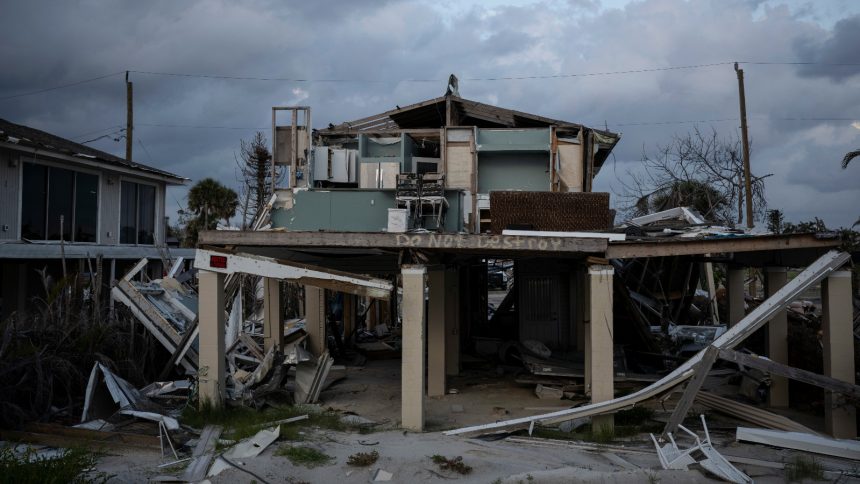When U.S. homeowners purchase subsidized flood insurance from the Federal Emergency Management Agency (FEMA), they agree to rebuild their homes to higher standards after flood disasters, even if it means significant costs. FEMA’s well-known 50 percent rule states that if a home in a flood-prone area incurs damages exceeding half its value, it must be demolished and reconstructed at an elevated level to reduce flood risk. While this can result in substantial expenses for homeowners, it prevents the public from bearing the financial burden of repeatedly repairing vulnerable homes.
Responsibility for enforcing the 50 percent rule primarily lies with local authorities in flood-affected regions, tasked with ensuring that residents do not rebuild in flood zones. In return for this vigilance, the federal government provides low-cost flood insurance to communities that demonstrate compliance with the rule, prompting real estate surges in areas like Florida. However, as Florida grapples with recovery from the devastating Hurricane Ian of 2022, the Biden administration may be signaling the end of this era of lenient regulations.
In a recent development, FEMA sent a stern letter to officials in Lee County, Florida, home to over 750,000 residents along coveted coastal areas in South Florida. The letter accused nearly 600 homeowners in cities like Cape Coral of violating the 50 percent rule and local construction laws by rebuilding vulnerable properties in flood zones post-Hurricane Ian. Despite previously granting the county and its cities a discount on flood insurance, FEMA threatened to revoke this discount due to inadequate post-hurricane compliance, signaling a shift in federal policy towards climate risk management.
The crackdown in Lee County reflects a broader trend of escalating costs linked to climate change and development, coinciding with rising housing expenses across the country. FEMA has raised flood insurance premiums nationwide to address escalating risks, while private insurers have similarly increased premiums for wind insurance in Gulf Coast states. By penalizing floodplain construction, FEMA aims to shift the financial responsibility for climate risk from the federal government to homeowners, potentially reshaping high-risk real estate markets.
The response to FEMA’s actions in Lee County has been fierce, with local leaders denouncing the agency and accusing it of hindering hurricane recovery efforts. Residents already facing surging insurance costs for flood and property coverage are now grappling with uncertainties surrounding FEMA’s enforcement of the 50 percent rule. With FEMA halting its decision temporarily, the county has a limited time frame to demonstrate compliance with flood regulations post-Hurricane Ian, posing challenges for residents who have already rebuilt noncompliant homes.
The broader implications of FEMA’s enforcement strategy are being closely monitored by floodplain management professionals, as communities nationwide navigate the complex terrain of post-disaster rebuilding. With Florida at the forefront of risky coastal development, the need to enforce stringent flood regulations is paramount to mitigate future storm risks. As local governments grapple with competing pressures from FEMA and displaced homeowners, the balance between compliance and compassion remains a critical issue in the face of escalating climate threats.






